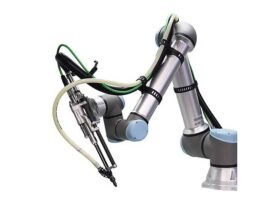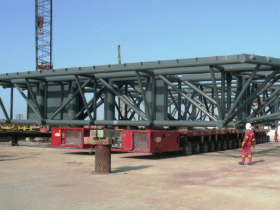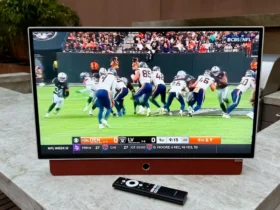Delivery driving promises flexible income but delivers route frustration. Apps assign clusters that make no geographical sense. Traffic patterns change hourly while routing stays static. Package quantities overwhelm vehicle capacity. Customer preferences conflict with efficient sequencing.
After six months of accepting whatever route assignments came my way, I decided to get strategic. Instead of hoping for better algorithm luck, I ask AI chat to help develop a systematic approach to delivery route planning that would maximize earnings while minimizing driving time and stress.
The results transformed both efficiency and income in ways that surprised me.
The Problem: Algorithm Assignment Chaos
Most delivery drivers accept route assignments as given, assuming the apps optimize everything automatically. My experience suggested otherwise. Routes often created unnecessary backtracking. Dense residential areas got mixed with scattered commercial stops. Time windows ignored traffic patterns completely.
Recording actual drive times versus app estimates revealed significant disconnects. Residential subdivisions took longer than projected due to narrow streets and parking challenges. Commercial areas during lunch hours added 20-30 minutes per stop. Construction zones created delays that routing never anticipated.
The Chatly AI chat consultation began by analyzing patterns in my delivery history to identify optimization opportunities that app algorithms missed.
Time Management Tips: Beyond Basic Scheduling
Traditional time management advice focuses on personal productivity rather than the unique challenges of delivery driving. AI chat approached this differently, recognizing that delivery efficiency depends on external factors beyond driver control.
Traffic Pattern Analysis: Morning rush hour affects different areas at different times. Business districts clear out around 9:30 AM while suburban school zones stay congested until 10:00 AM. Lunch hours create predictable slowdowns near restaurant clusters. Afternoon patterns reverse morning flows but with different timing.
Customer Behavior Patterns: Residential deliveries succeed more often during mid-morning hours when people are home. Business deliveries work best before lunch or after 2:00 PM when staff availability improves. Apartment complexes require extra time for building access and unit location.
Vehicle and Equipment Optimization: Car organization affects stop efficiency significantly. Package sorting before starting saves minutes per delivery. GPS phone mounting prevents dangerous handling while driving. Insulated bags maintain food temperatures during multiple stops.
Personal Energy Management: Driver fatigue affects decision-making and safety throughout long shifts. Strategic break timing maintains performance levels. Hydration and nutrition impact concentration during complex routing decisions.
This shift strategy recognized that delivery driving involves managing multiple dynamic systems simultaneously rather than just following GPS directions.
Route Planning Science: What Actually Works
AI chat analyzed delivery route planning as an optimization problem with multiple constraints and variables. Traditional approaches focus on distance minimization while ignoring time, traffic, and practical considerations.
Geographic Clustering Principles: Effective routes group stops by geography but sequence them based on accessibility and timing. Dense residential areas work best with systematic street-by-street coverage. Commercial districts require scheduling around business hours and loading zone availability.
Time Window Optimization: Customer delivery preferences create scheduling constraints that affect route efficiency. Early morning preference stops should cluster together rather than scatter throughout the day. Evening delivery requests work better as final stops rather than interrupting daytime flows.
Traffic Flow Integration: Rush hour patterns dictate routing direction and timing more than pure distance calculations. Morning routes should flow with commuter traffic rather than against it. Afternoon planning must account for school zones and business district exodus timing.
Capacity and Load Management: Vehicle space constraints affect stop sequencing decisions. Heavy items should locate near vehicle access points. Fragile packages need protective positioning. Food deliveries require temperature control consideration throughout the route.
The gig work best practices revealed that successful drivers think systematically about these factors rather than relying purely on app-provided routing.
Delivery Route Planning: The Strategic Framework
Rather than accepting assigned routes passively, AI chat developed a framework for evaluating and modifying route assignments to optimize efficiency and earnings.
Pre-Shift Planning Phase:
- Review weather and traffic conditions for the day
- Check for road closures or construction delays
- Identify high-value delivery opportunities in preferred areas
- Plan break timing and location based on route geography
Route Selection Strategy:
- Prioritize geographic areas with dense stop concentration
- Avoid routes mixing distant areas unless pay premium justifies travel time
- Consider vehicle fuel efficiency when evaluating longer distance opportunities
- Factor parking availability and delivery complexity into route decisions
Dynamic Adjustment Process:
- Monitor actual time performance versus estimates throughout shift
- Identify pattern deviations that suggest route modifications
- Communicate delivery delays proactively to maintain customer satisfaction
- Document successful route patterns for future reference
Performance Tracking System:
- Record actual earnings per hour including deadhead time
- Track fuel costs and vehicle wear for accurate profitability analysis
- Monitor customer rating trends related to delivery timing
- Evaluate personal fatigue and stress levels for sustainable scheduling
This delivery route planning approach treated driving as a business operation requiring strategic decision-making rather than simple task execution.
Area Specialization: Building Geographic Expertise
The AI chat analysis suggested that developing expertise in specific geographic areas provides advantages over constantly working new territories. Local knowledge compounds efficiency gains over time.
Residential Area Mastery: Learning subdivision layouts eliminates GPS dependency for faster navigation. Understanding parking patterns prevents time waste searching for legal spots. Knowing building access methods speeds apartment and condo deliveries. Recognizing customer preferences improves satisfaction ratings.
Commercial District Proficiency: Business delivery patterns become predictable with experience. Loading zone availability follows consistent schedules. Building access procedures become familiar routines. Staff recognition improves delivery reception and processing speed.
Traffic Pattern Expertise: Local traffic flow knowledge enables better route timing decisions. Construction zone awareness prevents unexpected delays. School zone timing becomes automatic consideration. Event scheduling awareness helps avoid temporary congestion.
Customer Relationship Development: Regular customers appreciate consistent service quality. Delivery preferences become known without special instructions. Problem locations get identified and managed proactively. Positive relationships lead to better ratings and tips.
This gig work best practices approach suggested that geographic specialization creates competitive advantages that general routing algorithms cannot provide.
Technology Integration: Tools That Actually Help
While avoiding dependence on automated route planning, certain technology tools genuinely improve delivery efficiency when used strategically.
- Navigation Enhancement: Multiple GPS apps provide different routing algorithms and real-time traffic data. Switching between apps based on conditions improves routing accuracy. Offline maps prevent connectivity issues in poor signal areas. Voice navigation reduces dangerous phone handling while driving.
- Communication Optimization: Customer communication apps streamline delivery coordination. Photo documentation prevents delivery disputes. Time stamping creates accountability records. Automated updates reduce repetitive communication tasks.
- Vehicle Monitoring Systems: Fuel tracking apps identify cost patterns and optimization opportunities. Mileage logging simplifies tax preparation and expense tracking. Maintenance reminders prevent costly breakdowns during earning periods. Performance monitoring helps identify efficiency improvements.
- Financial Management Tools: Earning tracking across multiple platforms provides comprehensive income analysis. Expense documentation enables accurate tax deduction claims. Schedule coordination prevents double-booking conflicts. Goal tracking maintains motivation during challenging periods.
The time management tips emphasized using technology as decision support rather than relying on automated systems that ignore local knowledge and personal judgment.
Shift Strategy: Maximizing Hourly Earnings
AI chat approached shift planning as a strategic exercise in matching supply and demand dynamics while considering personal energy management and vehicle costs.
Peak Hour Identification: Different delivery types have distinct demand patterns throughout the day. Food delivery surges during meal times but pays premium rates. Package delivery maintains steady demand with lower per-delivery rates. Grocery delivery peaks during weekend hours with higher tip potential.
Geographic Arbitrage: Affluent areas typically provide higher tips but may have lower delivery density. Business districts offer consistent volume during weekday hours. University areas provide steady demand but lower average order values. Suburban zones balance tip potential with driving distances.
Dynamic Pricing Response: Surge pricing periods justify working less preferred hours or areas. Storm pay premiums can make challenging weather conditions profitable. Holiday bonuses offset increased traffic and delivery complexity. Special event pricing compensates for temporary congestion and parking challenges.
Personal Performance Optimization: Individual productivity patterns affect optimal shift timing and duration. Some drivers perform better during morning hours while others prefer evening shifts. Vehicle fuel efficiency affects profitability calculations for longer distance opportunities. Personal schedule constraints influence available working hours.
This shift strategy recognized that successful delivery driving requires matching personal capabilities with market opportunities rather than simply maximizing hours worked.
Seasonal Adaptations: Planning for Change
Delivery demand and routing efficiency change significantly with seasons, requiring strategic adaptations to maintain consistent earnings and efficiency.
Weather Impact Management: Rain reduces driver supply while increasing delivery demand, creating earning opportunities for prepared drivers. Snow requires route modifications and equipment adjustments for safe operation. Heat affects food delivery quality and requires insulated storage solutions. Cold weather impacts vehicle performance and personal comfort during long shifts.
Holiday Season Planning: Package delivery volume increases dramatically during shopping seasons but with tighter delivery windows. Restaurant delivery patterns shift during holidays with different cuisine preferences. Gift delivery requires special handling and communication protocols. Increased traffic congestion affects route timing and fuel consumption.
Student Population Fluctuations: University areas experience dramatic demand changes during academic year cycles. Summer months reduce delivery density in college neighborhoods. Move-in and move-out periods create temporary high-volume opportunities. Graduation and orientation weeks generate special delivery needs.
Economic Cycle Responses: Economic downturns affect tip rates and order values across all delivery types. Inflation impacts fuel costs and vehicle maintenance expenses. Employment changes alter delivery demand patterns in different geographic areas. Cost-of-living increases influence customer behavior and service expectations.
Results: Measurable Improvements
Implementing the AI chat delivery route planning system produced quantifiable improvements across multiple performance metrics within the first month of consistent application.
Efficiency Gains:
- Average deliveries per hour increased from 2.3 to 3.1 through better routing
- Driving time between stops reduced by 28% through geographic clustering
- Fuel costs decreased by £45 per week through optimized route planning
- Vehicle wear reduction estimated at 15% through reduced mileage and stop frequency
Earnings Improvements:
- Hourly earnings increased by £3.20 through higher delivery volume and efficiency
- Customer satisfaction ratings improved from 4.6 to 4.8 through reliable timing
- Tip averages increased by 12% through improved service consistency
- Bonus qualification frequency improved through better performance metrics
Quality of Life Enhancements:
- Daily stress levels decreased through predictable routing and timing
- Physical fatigue reduced through more efficient vehicle organization
- Schedule predictability improved through consistent area specialization
- Professional satisfaction increased through systematic performance improvement
Advanced Strategies: Continuing Optimization
Six months of systematic route optimization revealed additional strategies for drivers seeking maximum efficiency and earnings potential.
Multi-Platform Coordination: Working multiple delivery platforms simultaneously requires sophisticated scheduling and route coordination. Order acceptance decisions must consider geographic compatibility and time window constraints. Platform-specific customer bases and pay structures affect strategic prioritization. Technology tools help manage multiple app interfaces without compromising safety.
Peak Event Exploitation: Major events create temporary delivery opportunities with premium pay rates. Sports events, concerts, and festivals generate concentrated demand in specific areas. Weather emergencies increase delivery demand while reducing driver supply. Planning for these opportunities requires advance preparation and flexible scheduling.
Vehicle Specialization: Different vehicle types enable access to different delivery opportunities. Larger vehicles handle bulk grocery and package deliveries more efficiently. Smaller vehicles navigate dense urban areas and apartment complexes better. Electric vehicles reduce fuel costs while providing access to restricted zones in some cities.
Business Relationship Development: Regular commercial customers often provide consistent delivery opportunities with negotiable rates. Restaurant partnerships can create steady income streams during specific hours. Corporate accounts offer scheduled deliveries with predictable routing and premium pay. Building these relationships requires consistent service quality and professional communication.
Long-Term Sustainability: Building a Delivery Career
The AI chat consultation extended beyond immediate efficiency improvements to address long-term sustainability considerations for professional delivery drivers.
Financial Planning: Vehicle depreciation and maintenance costs require systematic budgeting and replacement planning. Tax optimization strategies help maximize take-home earnings from gig work income. Emergency fund development provides stability during slow periods or vehicle breakdowns. Retirement planning becomes essential without traditional employer benefits.
Skills Development: Customer service excellence distinguishes professional drivers from casual workers. Technology proficiency enables access to better delivery opportunities and efficiency tools. Business management skills help optimize operations and identify growth opportunities. Communication abilities improve customer relationships and problem resolution.
Health and Safety: Physical demands of delivery work require attention to ergonomics and injury prevention. Mental health considerations include stress management and work-life balance. Vehicle safety maintenance prevents accidents and costly repairs. Insurance coverage evaluation ensures adequate protection for commercial vehicle use.
The gig work best practices framework provided structure for building sustainable delivery careers rather than treating it as temporary income supplementation.
Route optimization transformed my delivery driving from reactive scrambling to strategic business operation. The systematic approach eliminated guesswork while providing measurable improvements in efficiency, earnings, and job satisfaction. Most importantly, it demonstrated that individual drivers can outperform algorithmic route assignment through local knowledge, strategic thinking, and systematic optimization.














Leave a Reply